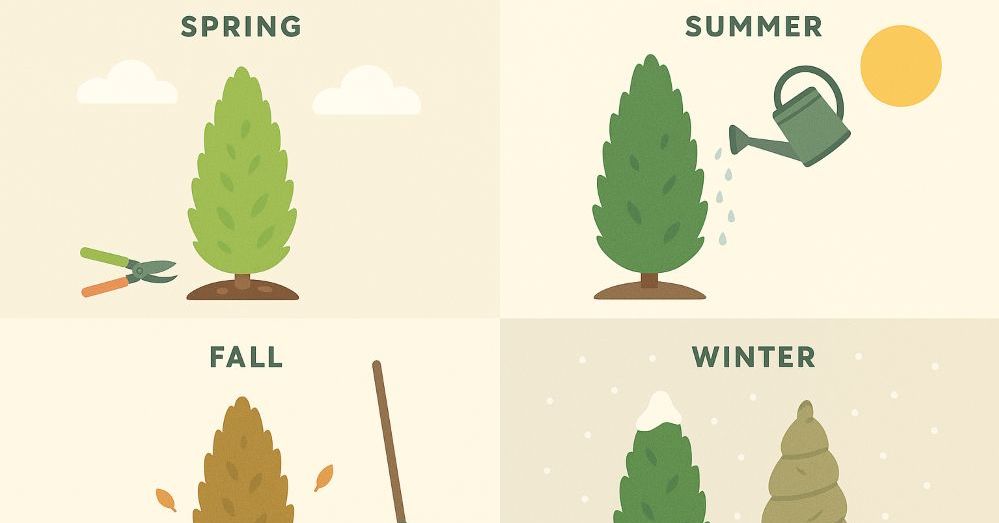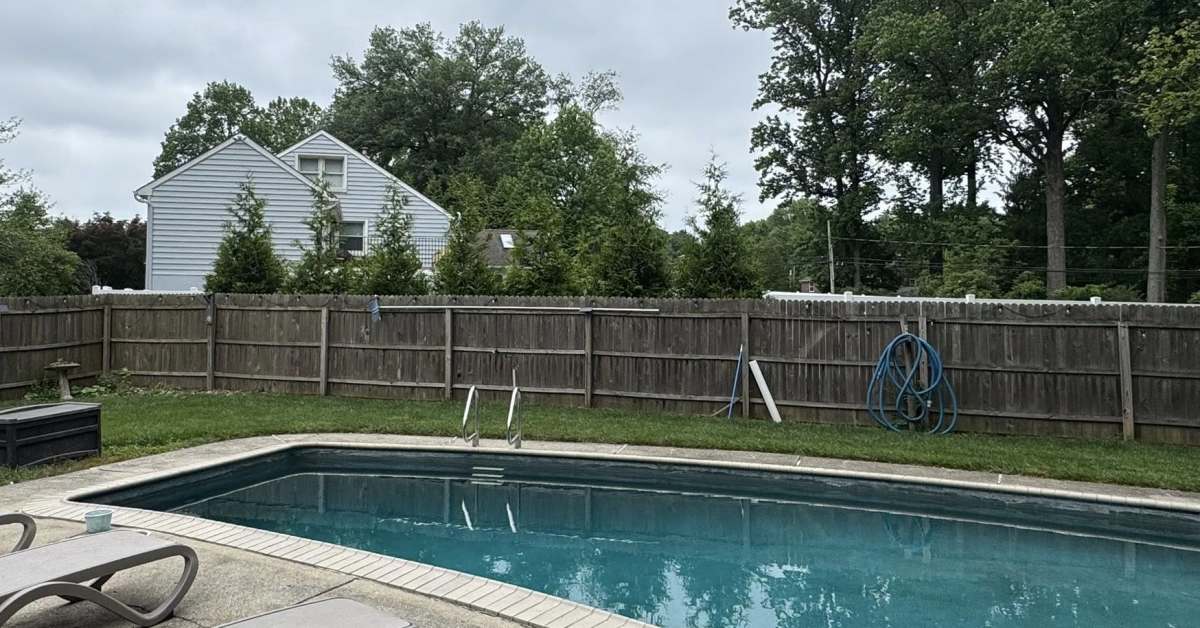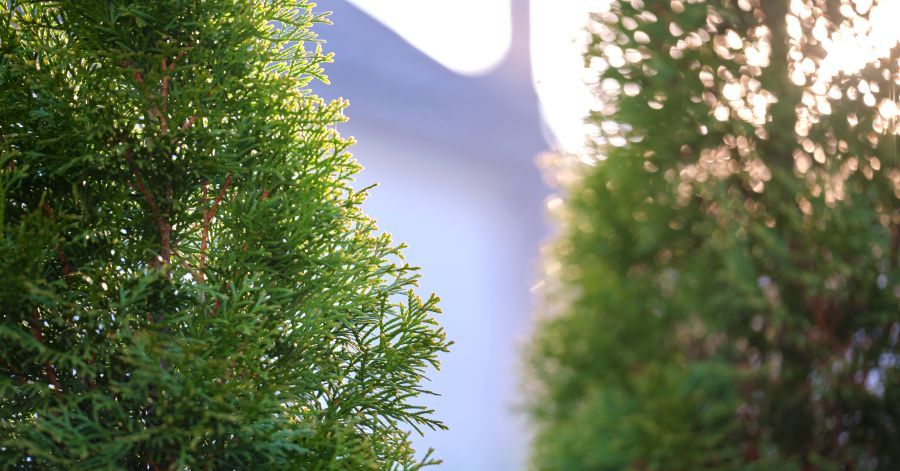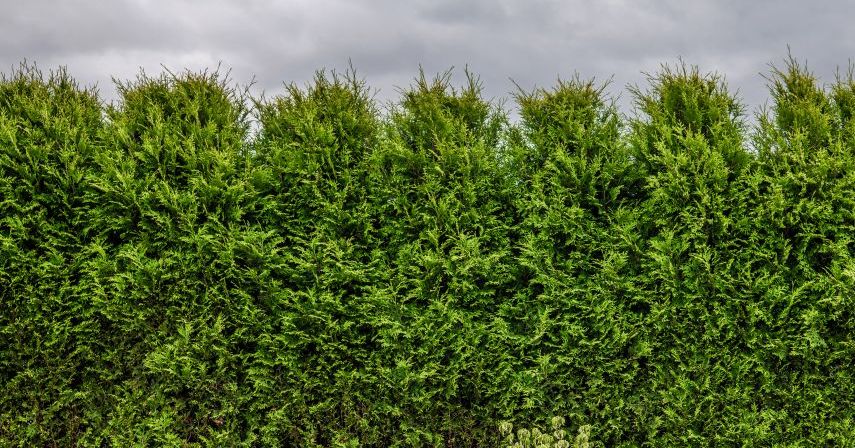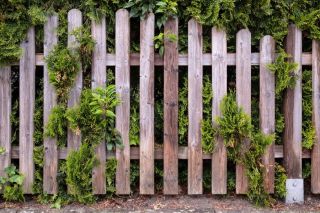
When it comes to backyard privacy, most people think of fences first—solid panels of wood, vinyl, or metal that form an instant barrier between you and the outside world.
But what if your privacy solution could grow more beautiful and effective with each passing season?
In this post, we’ll explore traditional fence privacy options and introduce you to a natural, low-maintenance alternative: the living fence—a green barrier made from fast-growing evergreen trees like arborvitae.
Why Backyard Privacy Matters
Privacy isn’t just about blocking views—it’s about creating a space where you can relax, entertain, and enjoy your yard without feeling exposed.
Homeowners are increasingly looking for outdoor privacy solutions that:
- Shield them from neighbors or traffic
- Reduce noise and wind
- Add value to the landscape
- Require minimal upkeep
Whether you’re working from your patio, hosting family gatherings, or just sipping coffee in peace, having the right privacy setup makes all the difference.
Popular Fence Privacy Solutions (and Their Downsides)
Here’s a look at the most common traditional fencing options:
Wood Fences
- Styles: Solid board, shadowbox, stockade
- Pros: Classic look, decent sound and sight blocking
- Cons: Prone to rot, warping, and pests; needs staining or sealing
Vinyl Privacy Panels
- Pros: Low maintenance, clean appearance
- Cons: Can crack or fade in extreme weather; higher cost
Composite Fences
- Pros: Durable, long-lasting
- Cons: Expensive, heavy, not very “natural”-looking
Bamboo/Reed Screens
- Pros: Affordable, quick to install
- Cons: Short lifespan, limited effectiveness for year-round privacy
Introducing the Living Privacy Fence
Why Arborvitae Is Ideal:
- Fast-growing: Up to 3–4 feet per year (Green Giant)
- Evergreen: Stays full and green all year long
- Narrow footprint: Great for tight spaces (e.g., American Pillar)
- Low maintenance: No staining, painting, or fence repairs
- Beautiful and soft-looking: Blends into the landscape
How Living Privacy Barriers “Grow with You”
- Year 1–2: Establishes roots and starts filling out
- Years 3–5: Reaches mature height and density
- Years 6+: Acts as a full-height privacy wall with no maintenance beyond light pruning
Designing a Living Fence That Works
Spacing Matters
- Most arborvitae thrive when planted 3–5 feet apart
- Closer spacing = quicker privacy
- Staggering rows can add extra thickness
Consider Layering
- Combine evergreens with flowering shrubs or hedges
- Add vines on a lattice for interest while trees grow
- Use taller trees in back, shorter plants in front for a tiered look
Use a Hybrid Design
- Pair a short fence with a row of trees behind it
- Trees soften the hardscape and add height and density over time
Cost Comparison: Fence Panels vs. Arborvitae Trees
Traditional Fence
- Material + install: $1,500–$2,500
- Maintenance over 10 years: $300–$700
- Total: $1,800–$3,200+
Living Fence (12–20 Arborvitae Trees)
- Tree cost: $500–$1,500 depending on size
- Planting: DIY or low-cost local help
- Maintenance: Mulch, water in first year—minimal after
- Total: $600–$1,800 (or more if you get large trees for immediate privacy)
Over time, the trees grow thicker, taller, and more beautiful—while the wood or vinyl fence begins to wear down.
Bonus Benefits of Living Fences
Beyond privacy and aesthetics, a living fence offers major advantages:
Environmental Impact
- Absorbs CO₂ and filters air
- Supports birds, pollinators, and beneficial insects
- Helps prevent soil erosion and runoff
Sound and Wind Buffering
- Dense greenery can absorb street noise and reduce wind
- Creates a quieter, more comfortable outdoor space
Shade and Cooling
- Trees lower the temperature around your yard naturally
- Creates a more comfortable microclimate
Final Thoughts
A traditional fence might give you privacy today, but a living fence gives you privacy, beauty, and long-term value that only improves with age.
If you're looking for a privacy solution that grows with your home, your family, and your landscape—planting a living barrier could be the smartest move you make for your backyard.
Ready to Grow Your Own Privacy?
We grow premium arborvitae and other privacy trees ideal for creating natural, lasting fences. Whether you're planning a full living screen or a mixed approach, we're here to help.
Explore Arborvitae for Privacy
Spacing & Planting Guide
Contact Us for a Custom Planting Plan
.png)

